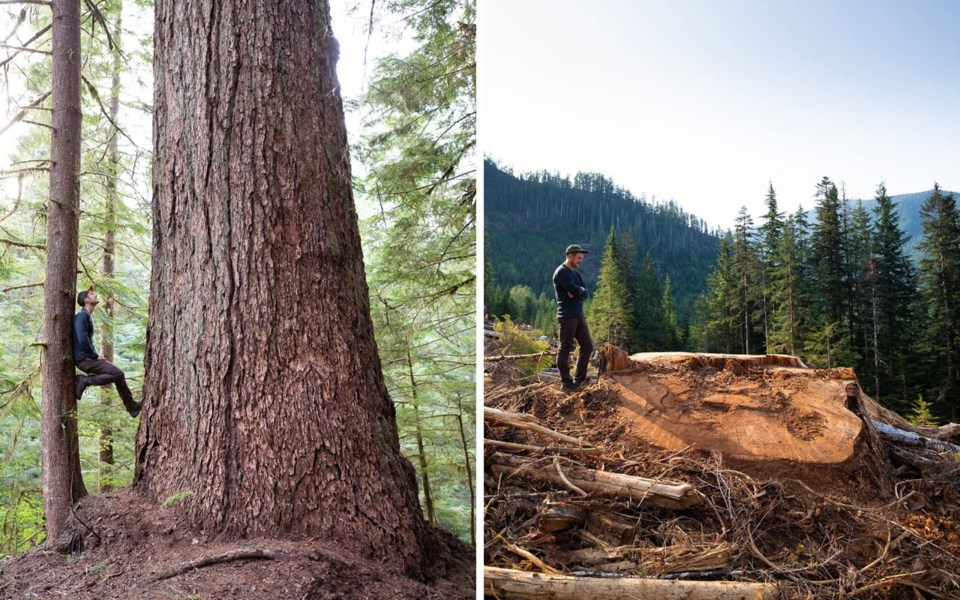Most of us have spent a fair bit of time enjoying the nature around us in the Whistler Valley.
I would hazard a guess though that when we are out and about, we are pedalling hard, earning the descent, running while making our to-do lists in our heads or hiking on a schedule.
And by using nature this way, we are actually at risk of losing it. Could we, as some have suggested, be heading toward a world where we will only be able to see the giants of our forests in protected glades—a tree museum if you like?
This past weekend saw the release of a long-anticipated map of our old and ancient trees. It was a passion project 16 years in the making and was only possible thanks to the dedication of Bob Brett, a forest ecologist with Snowline Ecological Research who was supported by the Association of Whistler Area Residents for the Environment (AWARE). (It's available for purchase at Armchair Books.)
Brett cored more than 1,000 trees to determine their ages as part of the research for the map, which allows hikers, bikers and people just out for a walk in Whistler to identify and learn about our old trees.
"This map project is to highlight original (uncut) old forest in a time when they have become increasingly rare," states the map. "Logging and development have reduced low-elevation forests to a small fraction of their original extent and these human pressures continue to threaten our remaining old forests."
Whistler's oldest known living tree, a yellow cedar, was discovered in 2012 uphill of Whistler Olympic Park in the Callaghan Valley. It's over 1,250 years old.
There is also old-growth forest in the Cheakamus Community Forest (CCF) but sadly, its days are numbered, as up to 65 per cent of it could be logged this year as part of the timber licence. The threat has always been that if Whistler and its partners in the CCF don't log it, the timber licence will be given to some other outfit, and instead of a managed forest, it could be clearcut.
For decades, logging companies have been cutting old-growth forests on the coast and on Vancouver Island claiming this is a sustainable practice since so many thousands of trees are planted to replace those taken.
But logging old growth is really more akin to mining. We are logging trees that are hundreds of years old and the Earth won't see their like again for a hundred generations.
When the NDP were campaigning for election in B.C. in 2017, they were a bit vague on protecting old growth, but the Green Party of BC was clear they wanted those forests protected. Last month, the Greens called for a moratorium on old-growth logging, but it was rejected by a government that has always been supported by the union representing the industry, the United Steelworkers.
(In 2016 and 2017, in the run-up to the NDP's election victory, breaking 12 years of Liberal rule, the Steelworkers donated about $1.4 million to the NDP. The Green Party, per its internal policy, does not take any donations by corporations or unions.)
We all know it's tough in forestry right now with mills closing permanently or temporarily—but that does not mean we can put aside the issue of logging old-growth. The Sierra Club reports that industrial old-growth logging continues at a rate of more than three-square metres per second, or about 34 soccer fields per day. That's over 10,000 hectares of old-growth a year clear cut.
Saving old-growth forests is not sentimental. These are trees that have survived fires, pestilence, drought, and many other stresses. We need to preserve their genes for the future of our forests.
They also store over 1,000 tonnes of carbon per hectare, one of the highest rates on Earth and are home to a unique ecosystem supporting a variety of life.
Change is hard. But make no mistake, action on many fronts is needed to fight climate change and that includes saving our old-growth forests.
(The province is inviting feedback from the public on ways to improve the Forest and Range Practices Act until July 15, which can be submitted on the B.C. government at https://engage.gov.bc.ca/govtogetherbc/consultation/forest-and-range-practices-act.)




